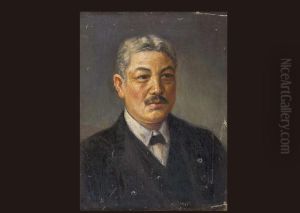Minami Kunzo Paintings
Minami Kunzo was a prominent Japanese painter whose work played a significant role in the development of modern art in Japan during the early 20th century. Born in 1883, Kunzo emerged from a period of significant cultural and artistic transition in Japan, as the country opened up to Western influences following the Meiji Restoration. This era was marked by a blend of traditional Japanese techniques with Western styles and concepts, leading to a rich, evolving art scene.
Kunzo's early education in art was rooted in traditional Japanese painting, but he was deeply influenced by Western artistic movements, particularly Impressionism and Post-Impressionism, which he encountered through his studies and travels. His work is characterized by a unique fusion of these influences, combining the delicate aesthetics of Japanese art with the bold colors and techniques of Western painting. This blend allowed him to create distinctive landscapes and portraits that captured the essence of his subjects with both sensitivity and a modern perspective.
Throughout his career, Kunzo was actively involved in the art community, participating in numerous exhibitions and contributing to the dialogue on art in Japan. He was a member of several art societies, through which he sought to promote modern art movements within Japan. Despite the challenges of working in a rapidly changing society, his commitment to his craft and his innovative approach to painting earned him recognition both in Japan and internationally.
Kunzo's legacy is one of bridging cultures through art. His works not only reflect the aesthetic shifts of his time but also serve as a testament to the dialogue between Eastern and Western art traditions. By the time of his death in 1950, he had established himself as a key figure in the modern art movement in Japan, leaving behind a body of work that continues to influence and inspire artists today. His contributions to the art world are remembered for their role in shaping the trajectory of modern Japanese art and for their enduring beauty and cultural significance.


